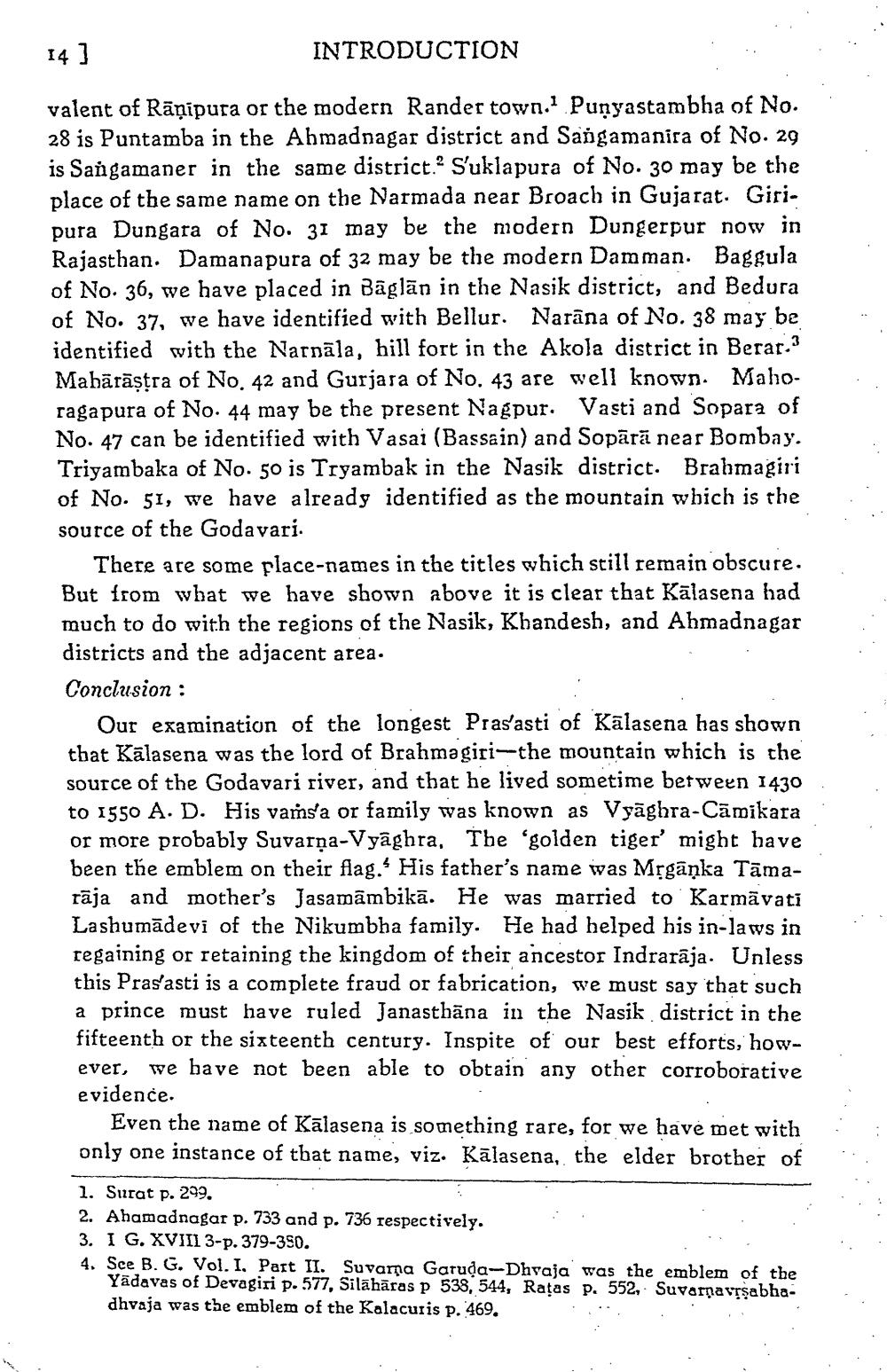________________
14 ]
INTRODUCTION
valent of Rāṇipura or the modern Rander town. Puņyastambha of No. 28 is Puntamba in the Ahmadnagar district and Sangamanira of No. 29 is Sangamaner in the same district.? Suklapura of No. 30 may be the place of the same name on the Narmada near Broach in Gujarat. Giripura Dungara of No. 31 may be the modern Dungerpur now in Rajasthan. Damanapura of 32 may be the modern Damman. Baggula of No. 36, we have placed in Bäglān in the Nasik district, and Bedura of No. 37, we have identified with Bellur. Narâna of No. 38 may be identified with the Narnāla, hill fort in the Akola district in Berar.3 Mahārāstra of No. 42 and Gurjara of No. 43 are well known. Mahoragapura of No. 44 may be the present Nagpur. Vasti and Sopara of No. 47 can be identified with Vasai (Bassain) and Sopātā near Bombay. Triyambaka of No. 50 is Tryambak in the Nasik district. Brahmagiri of No. 51, we have already identified as the mountain which is the source of the Godavari.
There are some place-names in the titles which still remain obscure. But from what we have shown above it is clear that Kālasena had much to do with the regions of the Nasik, Khandesh, and Ahmadnagar districts and the adjacent area. Conclusion :
Our examination of the longest Pras'asti of Kālasena has shown that Kālasena was the lord of Brahmagiri--the mountain which is the source of the Godavari river, and that he lived sometime between 1430 to 1550 A. D. His varsa or family was known as Vyāghra-Cāmikara or more probably Suvarņa-Vyāghra, The 'golden tiger' might have been the emblem on their flag. His father's name was Mrgānka Tāmarāja and mother's Jasamāmbikā. He was married to Karmāvati Lashumādevi of the Nikumbha family. He had helped his in-laws in regaining or retaining the kingdom of their ancestor Indrarāja. Unless this Pras'asti is a complete fraud or fabrication, we must say that such a prince must have ruled Janasthāna in the Nasik district in the fifteenth or the sixteenth century. Inspite of our best efforts, however, we have not been able to obtain any other corroborative evidence.
Even the name of Kālasena is something rare, for we have met with only one instance of that name, viz. Kālasena, the elder brother of 1. Surat p. 299. 2. Ahamadnagar p. 733 and p. 736 respectively. 3. I G. XVIII 3-p. 379-350. 4. See B. G. Vol. I, Part II. Suvarna Garuda-Dhvaja was the emblem of the
Yadavas of Devagiri p. 577, Silahāras p 538, 544, Ratas p. 552, Suvarnavrsabhadhvaja was the emblem of the Kalacuris p. 469.




